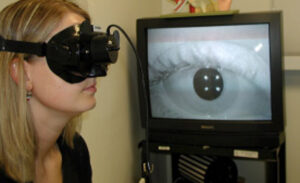Vertigo is NOT a Diagnosis!
Feeling like the room is spinning or the world is tilting beneath you? That’s vertigo—a symptom, not a diagnosis. Vertigo signals that something’s off, and it’s crucial to see a healthcare provider to pinpoint the root cause. At LifeMotion Physical Therapy, we’re here to help you uncover the cause and get back to feeling steady.
Let’s dive into some common causes of vertigo we treat at LifeMotion and how we can help you find relief.
Benign Paroxysmal Positional Vertigo (BPPV)
What is it?
BPPV is often what people mean when they say “vertigo.” Inside your inner ear (the vestibular system), tiny particles called otoconia are supposed to stay in place. Sometimes, these particles drift into the semicircular canals, where they don’t belong. This sends false signals to your brain, causing that dizzy, spinning sensation.

How is it diagnosed?
Our skilled physical therapists use specific head-positioning tests to trigger particle movement. This causes an involuntary eye movement called nystagmus, which helps us identify which semicircular canal is affected. Curious about how it works? Check out this video to see it in action!
How is it treated?
Similar to testing, your therapist will know which maneuver is appropriate to use based on the location of the particles. The most common is the Epley Maneuver, but did you know this only treats one of the three semicircular canals. Our therapists are up to date on the latest research and can perform the most appropriate maneuver for the best outcomes. With a trained professional, BPPV can be resolved in 1-2 visits.
Can you prevent it?
Unfortunately, BPPV can strike without warning. Weather changes, sinus pressure, dehydration, calcium deficiencies, or head bumps may contribute. To reduce your risk, try staying hydrated, taking vitamin D3, and sleeping with your head slightly elevated (20-30 degrees).
Vestibular Neuritis/Labyrinthitis
What is it?
Unlike BPPV, this type of vertigo lasts longer and may feel like spinning or a “boat-rocking” sensation. It’s caused by inflammation or reduced blood flow to the nerve(s) supplying the inner ear. “Neuritis” refers to nerve inflammation, while “labyrinthitis” includes hearing loss. Often triggered by ear or respiratory infections, this condition disrupts communication between the inner ear and brain, leading to intense dizziness and balance issues. Without prompt treatment, nerve damage may become permanent.
How is it diagnosed?
When the dizziness first starts, sometimes a nystagmus (involuntary eye movement) can be seen while you are sitting still or looking side to side with your eyes. Your physical therapist at LifeMotion will perform tests in a pair of infrared video goggles so they can watch your eyes while they are in light-blocking goggles. A videonystagmography (VNG) test can also be performed by an ENT to see how much function in the inner ear was lost.
 How is it treated?
How is it treated?
Timing is CRITICAL! Research shows that starting prednisone within 24 hours of symptoms can lead to a full recovery. Even within the first week, prednisone can minimize damage. If you’re past this window, don’t worry—vestibular therapy is highly effective. Our 6-week, evidence-based program helps the healthy parts of your inner ear compensate, restoring balance and function.
Other Common Causes
If vestibular issues aren’t the culprit, vertigo may stem from:
- Dehydration
- Low blood pressure
- Poor blood flow
- Certain medications
If your physical therapist and other members of your healthcare team cannot find solid evidence of a vestibular problem, it is important to remember these causes may contribute. Finding a reason for dizziness leads to better outcomes and decreases your risk for falls.
We are Here to Help!
At LifeMotion, we’re passionate about helping you conquer dizziness. Our expert Doctors of Physical Therapy provide personalized care to guide you through recovery. Have questions or ready to book a consultation? Call us at 918-574-2575 or visit our website to learn more.






